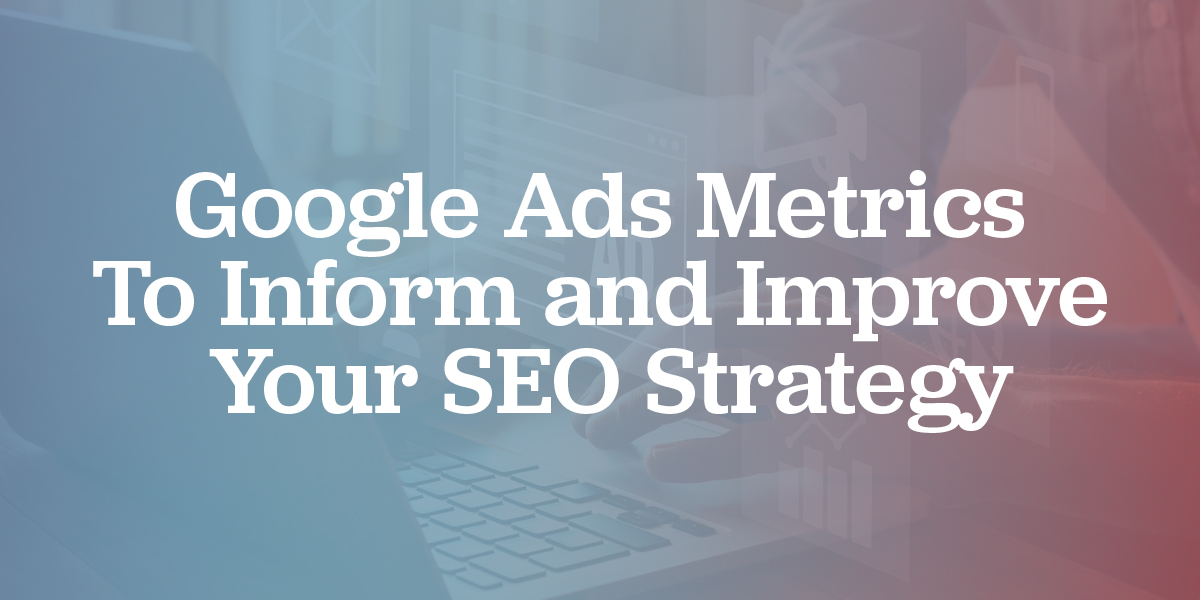10 Google Ads Metrics That Can Inform and Improve Your SEO Strategy
Lisa Hirst Carnes | October 2021

Most marketers seem to have a strong bias towards paid advertising or SEO. Let me tell you from my experience their opinions can be very passionate and palpable (especially on the SEO side).
There might be a couple of explanations for these strong reactions.
Maybe the strong reactions can be chalked up to the fact that these two disciplines require vastly different skill sets and tend to attract different types of people. Or maybe it’s because SEOs fail to learn the basics of PPC and PPC experts don’t know much about SEO. Let’s face it. We tend to prefer what we know and stay in our comfort lanes.
Whatever the reason, this divide exists. These two very vital digital marketing strategies are often pitted against each other instead of taking a united approach.
Personally, I strongly believe that both Google Ads and SEO each have their place depending on your objectives and when they are aligned and used together can produce fantastic results.
Since day one, Google has firmly stated that SEO is not pay-to-play and Google Ads advertising will not improve your organic search rankings. While this may be true on the surface, there are many ways to use Google Ads data to help inform and improve your SEO strategy.
In this post, we’ll cover how you can use Google Ads to boost your SEO.
Google Ads data can be your SEO strategy’s secret weapon if you know where to look.
10 Vital Google Ads Metrics for Improving Your SEO
Google Ads Metrics |
What it Might Mean for Your SEO? |
| High Number of Impressions | This may indicate that this is high volume keyword and a good keyword to focus on over the long term. |
| Search Terms (These are the actual search terms that people used to trigger your ad.) | People are strange and their search habits are unpredictable. Use the Search Terms report to hone your list of keywords and to identify longtail and broad keywords. |
| Keywords with High CPC | These are likely your most competitive keywords. They’re good bets but may take a lot of focused energy from an SEO perspective. |
| High-Cost Keywords that Don’t Convert | These keywords may not resonate with your audience. Don’t focus on them. |
| High-Quality Score | Since Quality Scores look at a combination of factors, such as ad and landing page relevance, focusing on keywords that have high-Quality Scores may be a good bet because they’re likely aligned to your landing pages. |
| Ad Copy | Look at your ads with the highest click-through rates (CTRs) – Use your top-performing ads to inform your page titles and meta descriptions. |
| CTAs in Ad Copy | Review the CTAs in your ad copy. Identify what CTAs seem to resonate with your audience. |
| Destination URL | Look at your highest performing destination URLs can shed light on page layout, CTAs, messaging, and more. |
| Geographic Performance Data | Use Google Ad’s geographic performance such as location data to identify where best converting users are coming from. Make sure this aligns with your local and broad SEO strategy. |
| Time Performance Data | Look at Google Ads day and time metrics to learn when users are most engaged. This may come in handy when you are sending marketing emails or publishing content. |
Contact us today if you need help with your SEO or Google Ads strategy!

